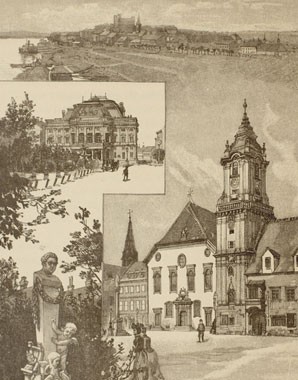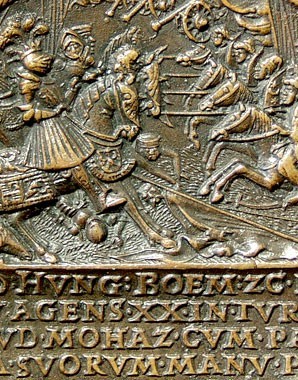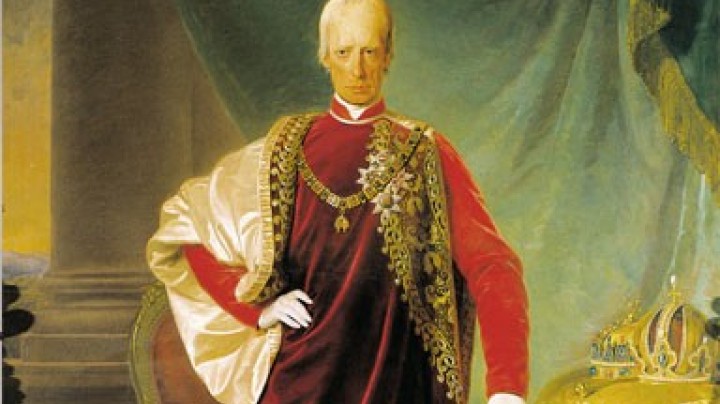Pressburg – the capital of exile
Pressburg, Pozsony, Prešporok, Posonium – the history of the Slovakian metropolis, today known as Bratislava, is as varied as the names it has been known by over the centuries. Under the Habsburgs the city on the Danube was for a time the capital of the Kingdom of Hungary.
The Habsburg epoch in the city’s history reflects the problems the dynasty had in gaining a foothold in Hungary. The acquisition of the Hungarian royal title in 1526 not only brought the dynasty another ancient crown but was also to be understood as a mission: it was expected the Habsburgs, as kings of Hungary, would stem the threat from the rapid expansion of the Ottoman Empire – a mission that would become one of the major challenges facing the Habsburg Monarchy for the next two hundred years.
The old capital of Ofen (Hungarian: Buda) – this medieval citadel is today a district in Budapest – was lost to the Ottomans in 1541. Pressburg, on account of its location on the border between Austrian and Hungary – within sight of Vienna, so to speak – and as far away as possible from the front, offered a secure seat for the administrative institutions of the country and a setting for coronations.
The country of which Pressburg had become the capital and city of coronation embraced only a third of the medieval kingdom: the Habsburg part of Hungary comprised Upper Hungary (corresponding roughly to the territory of present-day Slovakia) and the western regions along the frontier with Austria. Central Hungary and the south were under Ottoman dominion. The eastern third consisted of the Grand Principality of Transylvania (Siebenbürgen), forming a buffer state that manoeuvred skilfully between the two power blocs. For the next 150 years, Hungary became a battlefield.
When Habsburg fortunes in Hungary turned around 1700 and the whole of the country came under Habsburg rule, Pressburg nevertheless remained the capital, as the old royal city of Ofen, like vast tracts of Hungary, was depopulated and devastated after centuries of conflict.
While the eighteenth century was a time of reconstruction, the Habsburg rulers also made repeated attempts to enforce political and religious conformity. However, the Hungarian Estates were largely successful in defending their ancient freedoms.
During the reign of Maria Theresa Pressburg experienced its final heyday as capital, when the castle was extended on a grand scale as the residence of the new governors, Maria Theresa’s favourite daughter Marie Christine and her husband, Albert of Saxe-Teschen.
Joseph II finally returned the capital to Ofen, which now began to expand rapidly and as part of Budapest was to become the stage for the emergence of the modern Hungarian nation in the nineteenth century. Pressburg fell back into provincial slumber from which it was not to awake until the formation of Slovakia as a territorial unit within the state of Czechoslovakia (1918/1920). In 1992 Bratislava became the capital of the independent Republic of Slovakia.



















